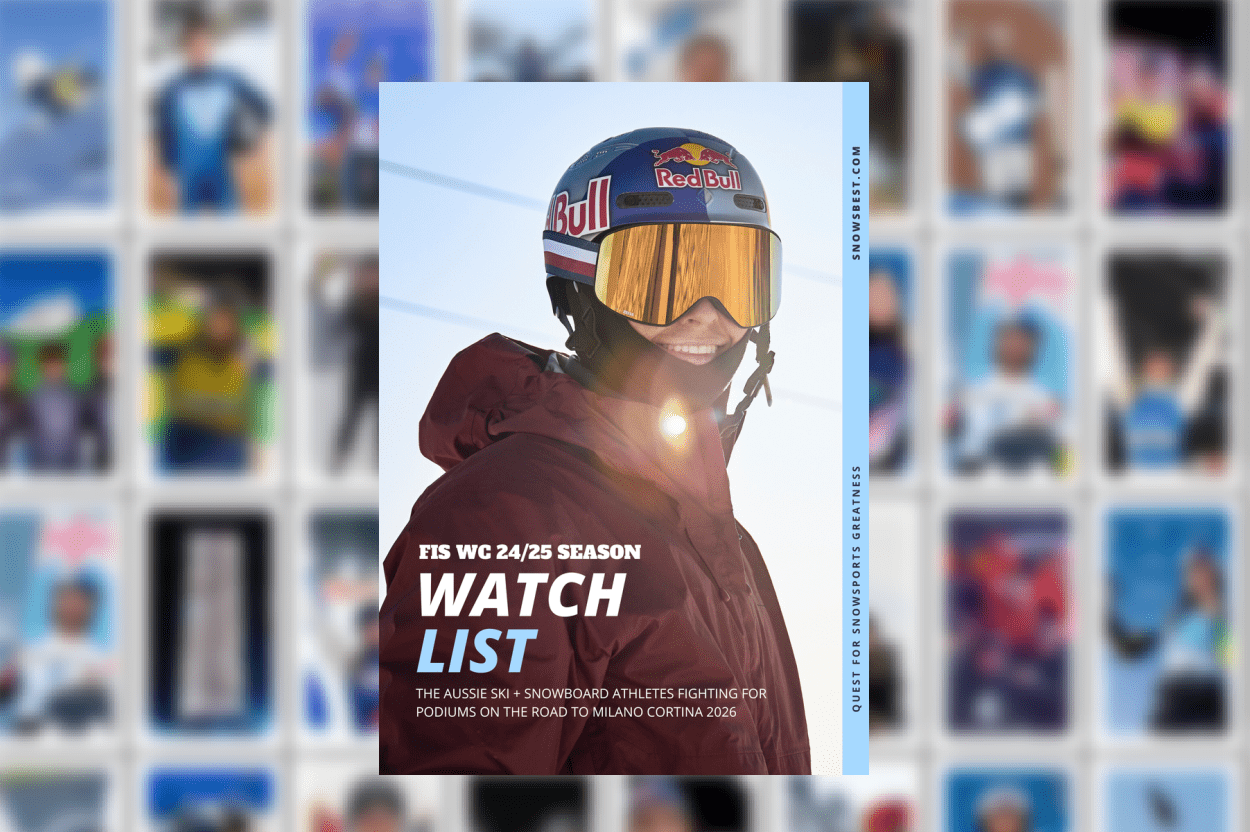Every year come the first major snowfall the sides of the Alpine Way and other famed Aussie winter roads are lined with two wheel drive vehicles sans chains sitting pretty in a ditch that stopped them from completely rolling and killing us all.
With two months to go until the opening weekend of Australia and New Zealand’s 2024 ski season, we figure there’s plenty of time to get both your car and winter driving skills up to scratch.
One thing guaranteed this winter. There will be snow. The other thing? There will be traffic jams as powder mad skiers and boarders race to get a car park close to the lifts so they don’t have to lug thousands of dollars of paraphernalia from the Subaru boot to the closest slope side barista.
Here are a few tips to start thinking about before that powder madness takes control.
Long before you leave

Get your motor checked
When the temperatures dip your car’s electrical system is challenged and before you know it you’ve got red warning lights and alarms and the engine shuts down.
Get your auto mechanic to give your alternator, battery, cooling system and engine a once over and while he’s there get him or her to check your tyres, brakes and windscreen wipers, heater and de-mister.
Emergency kits
Torch, emergency blanket, woollen blanket, snow spade, tow rope, windscreen scraper, first aid kit and chocolate (don’t forget that bit). Put them all together in a bag and leave them in the car as your emergency kit. Also add a groundsheet to use should you need to fit snow chains (see below) to your tyres, that way you’ll have something protecting you from the cold ground.
Cool out
Chances are if you can afford to go skiing then you’re probably got a modern car, which means coolants. However it’s still worth checking to see if your model needs a low temperature coolant or even anti-freeze for the radiator (remember them?).
You don’t want frozen engine blocks and radiators because that is going to cost a lot of money in repairs.
While you’re at it make sure the windscreen washers also have anti-freeze so they don’t freeze up and stop working when you most need them. Our tip? Add alcohol (if you can spare it) as that also does the trick.
Alpine diesel fuel is available for diesel engines to ensure your diesel fuel doesn’t freeze (we learned this the hard way).
Snow chains
These are a given, or so you’d think. Because all two wheel drive vehicles in the Mount Kosciuszko National Park must carry them and you’ll be fined if you don’t.
Snow chains fit over your wheels and provide traction. If you have a rear wheel drive then fit them on the back wheels if you have a front wheel drive then fit them on the front wheels.
You can hire them in Cooma on your way to the NSW fields or in Mansfield on way to Mt Buller and Mt Beauty and Bright and Omeo in Victoria. Make sure you get the right size for your wheels – diameter and tyre size.
If you’re a newbie to chain fitting then you might want to practice putting them on and off where you hire them from before making your way to the ski areas. You won’t need to jack your car, nor will you need to drive over the chains to fit them, your car remains stationary and you do the fitting. You will need to make sure they have the right tension and are not loose so they don’t damage your vehicle.
When the powers that be decide you need chains on the road there will be signs everywhere telling you so, and even chain fitting bays where you can fit them. If you have a four wheel drive it’s unlikely you’ll be required to fit them, but good to have them just in case should the weather turn extreme and even your fancy SUV freaks out.
When you drive with the chains fitted, then do so slowly, to prevent wrecking your car. Radial tyres shouldn’t go faster than 40km/hr.
Driving in snow and ice
There’s a few tricks to staying on the road when the road is covered in snow and ice. Watch our video below with tips from a pro rally driver and Miss Snow It All trialing her own ice driving skills (or lack of them) or read on for more.
Adjust your speed to the weather and always slow down when conditions deteriorate. Turn on your fog lights so other drivers can see you and for god’s sake don’t overtake when you can’t see. While we’re at it, no tailgating, the braking distance in winter conditions are far greater than on a sunny summer day, so back off.
Look for the poles
Snow poles are painted orange and are tall enough for drivers to get their bearings in heavy snow, you’ll find them on the sides of the road to warn you where the road stops and the bank begins. Please don’t keep driving if you can’t see the edge of the road or the next snow pole. Stop your car, put on your hazard lights and wait for a break in the weather.
Black ice
Black ice is a bugger, to say the least. You won’t be able to see it but you’ll know when you’ve hit it. Watch the ice driving video above for some tips.
When you get there
Handbrakes
Don’t apply the hand brake lest moisture freezes the cables and brake linings and it snaps. Instead leave the car in gear and make sure you’ve turned the front wheels away from the slope of the road.
Protect your windscreen wipers
Unless you’re parking for a short time, it’s a good idea to lift the wipers off your windscreen or place them in a plastic bag so they won’t stick to the glass. Add the plastic bag to the emergency kit outlined above.
More info here.

































